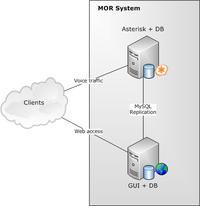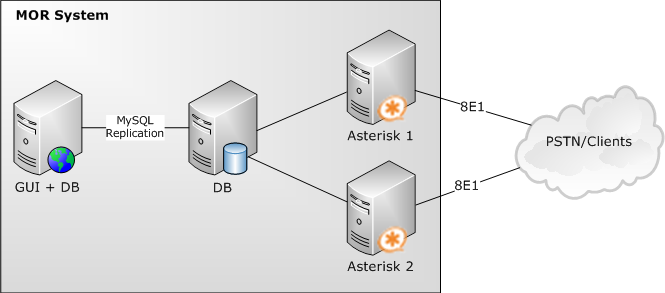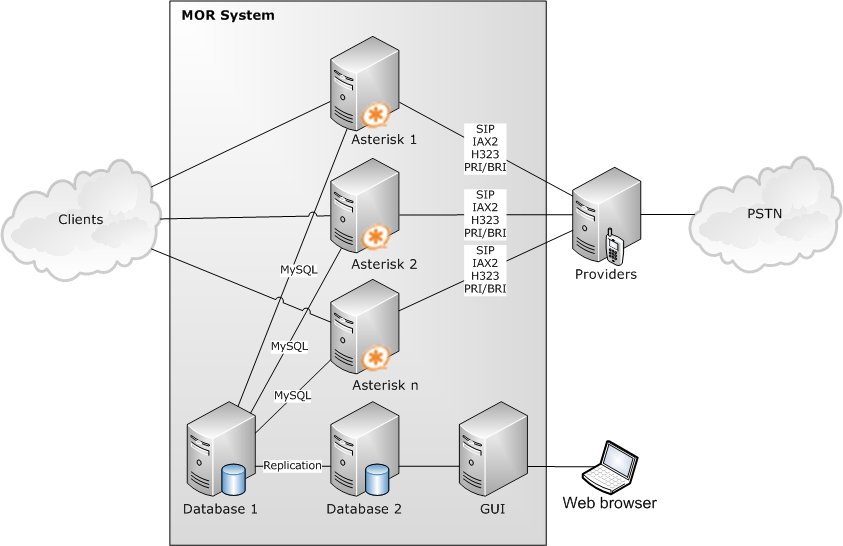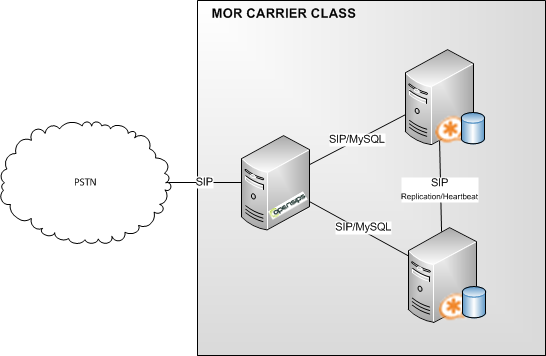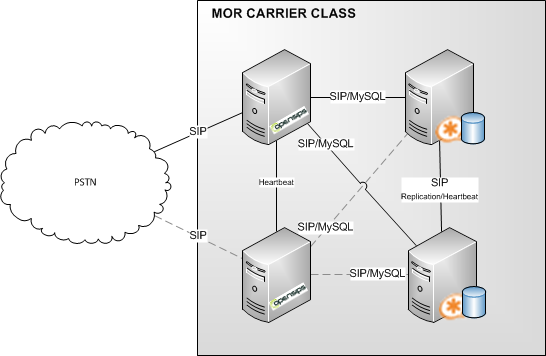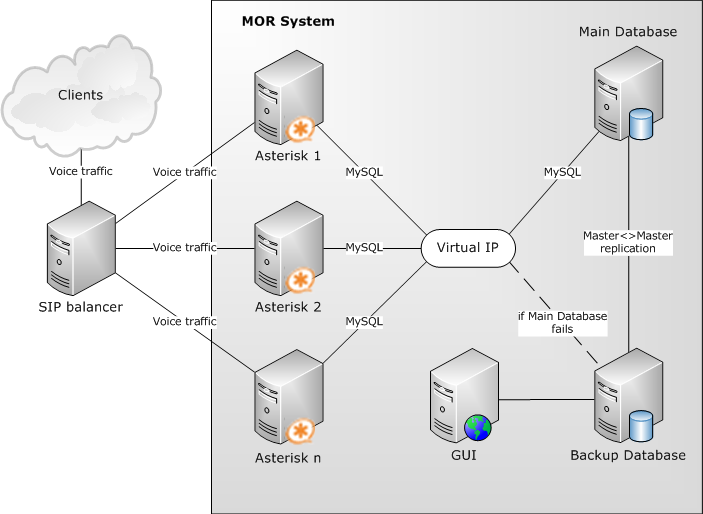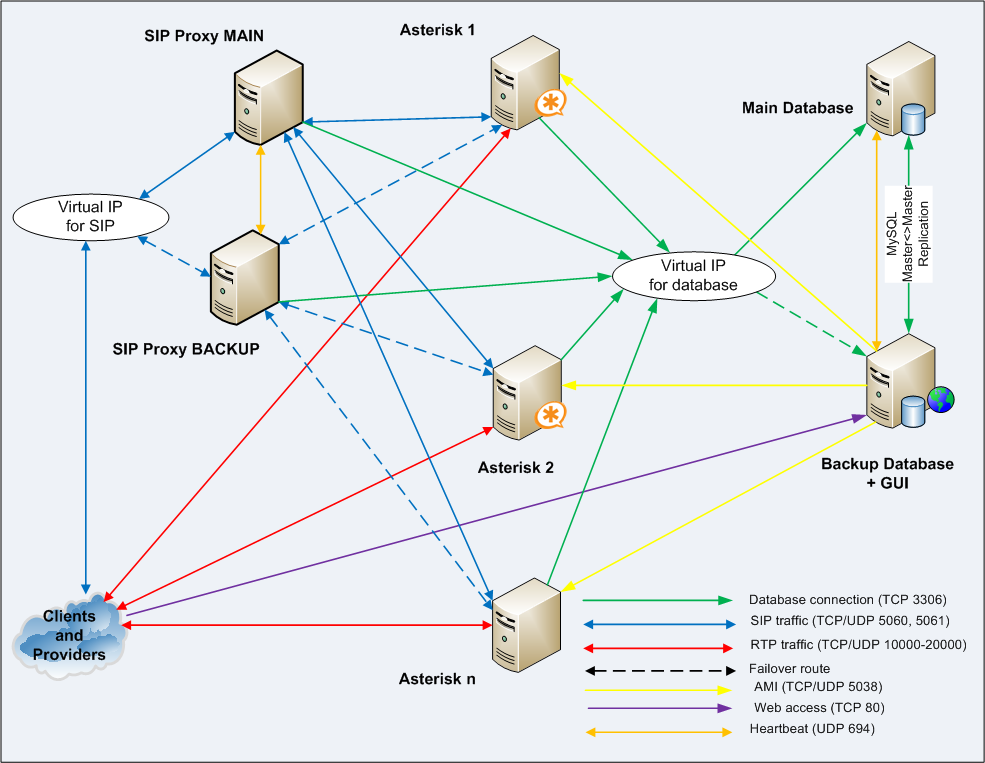Implementations
This page shows some ways how MOR billing system can be used. Examples are from real implementations.
2 servers solution
This solution has two replicated databases.
Asterisk connects to one database and GUI connects to another, so it increases performance when Web interface is used intensively.
2 server redundant solution
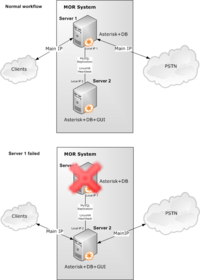 This is the most popular solution because it is fully redundant and most stable.
This is the most popular solution because it is fully redundant and most stable.
More info: 2 server redundant solution
4 server redundant solution
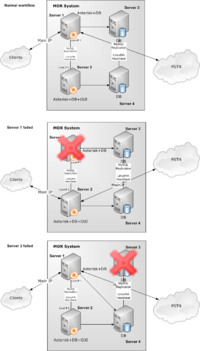 Stable and redundant solution for high performance.
Stable and redundant solution for high performance.
More info: 4 server redundant solution
 4 server solution in Italy with 16 E1
4 server solution in Italy with 16 E1
- Such system is in Italy serving Call Shops
- E1 hardware is 2 x Sangoma A108DE cards
- This implementation is used for high volume calls to/from PSTN network over 16 E1 links were 4+4 E1 is for incoming and 4+4 E1 is for outgoing (on Asterisk 1 server 4 incoming/4 outgoing and same on server Asterisk 2).
- Separate server is dedicated to database which minimizes load on Asterisk servers.
- GUI is on separate server with it's own DB connected to main DB server over MySQL Replication.
Many Asterisk servers with DB Replication
SIP Balancer solutions
Minimal structure without redundancy
NOTES:
- GUI is on Asterisk/DB servers
- When Proxy server (OpenSIPS) crashes, all system is down -> no redundancy, not recommended in production, good for testing
- DB (Asterisk/GUI) servers share 1 IP also managed by Heartbeat
- Setup without Heartbeat also is possible, but this introduces 1 more point of failure (DB server), but simplifies the setup, thus allowing faster setup for testing
Minimal structure for full-redundancy
NOTES:
- GUI is on Asterisk/DB servers
- Proxy servers share 1 IP managed by Heartbeat
- DB (Asterisk/GUI) servers share another 1 IP also managed by Heartbeat
Multiple Asterisk servers, high performance system with SIP balancer and DB Replication
- SIP balancer
- If one of Asterisk servers fails, SIP balancer routes calls via remained Asterisk servers.
- LinuxHA heartbeat monitors Database servers
- When Main Database fails - Backup Database sees that and after 10s (default) will take Virtual IP, it is done automatically.
- When Main Database is back up - Backup Database returns Virtual IP to Main Database and system starts to function in normal work flow (done automatically).
- GUI server is connected to Backup Database to avoid load on Main Database in normal work flow.
This solution can handle up to 1000 simultaneous calls. Certain amount of calls may vary depending on hardware, codecs used and transcoding. Additional Asterisk servers can be added if larger amount of simultaneous calls is needed.
Complete Redundancy, high performance system with SIP balancer
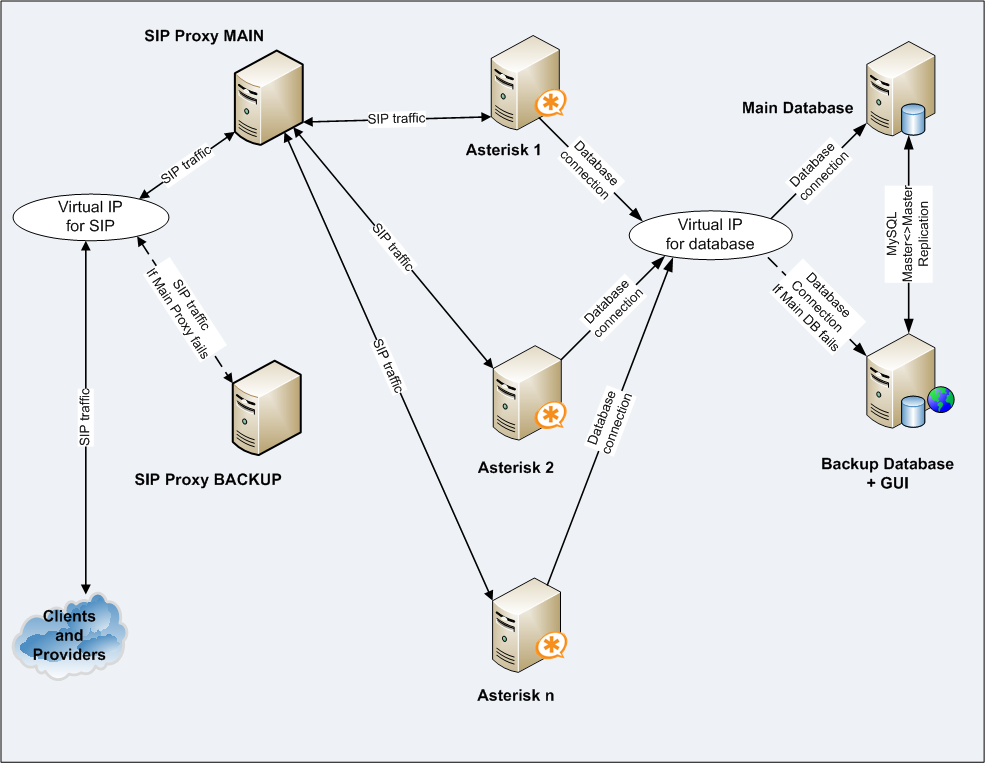
Detailed schematic of SIP Proxy solution:
- GUI is on DB servers
- Proxy servers share 1 IP managed by Heartbeat
- DB (Asterisk/GUI) servers share another 1 IP also managed by Heartbeat
- More Asterisk Nodes can be connected, example with 2 is bare minimum
For more details about SIP Balancer solution click here
